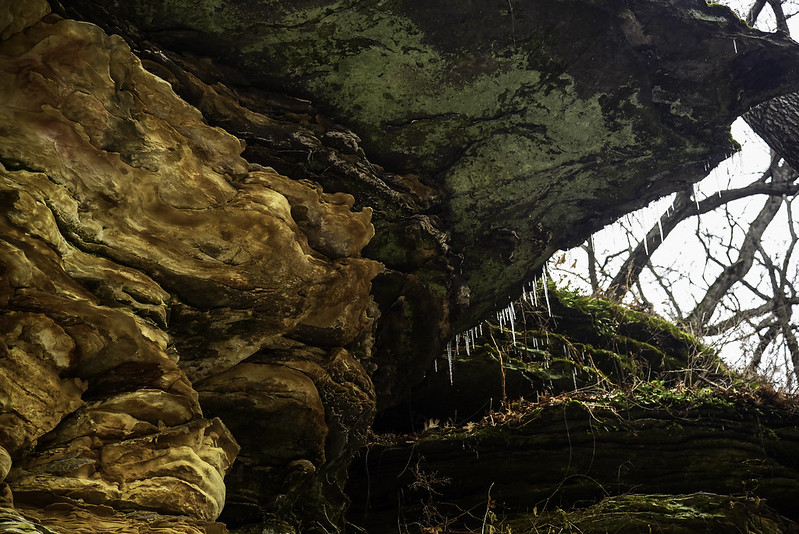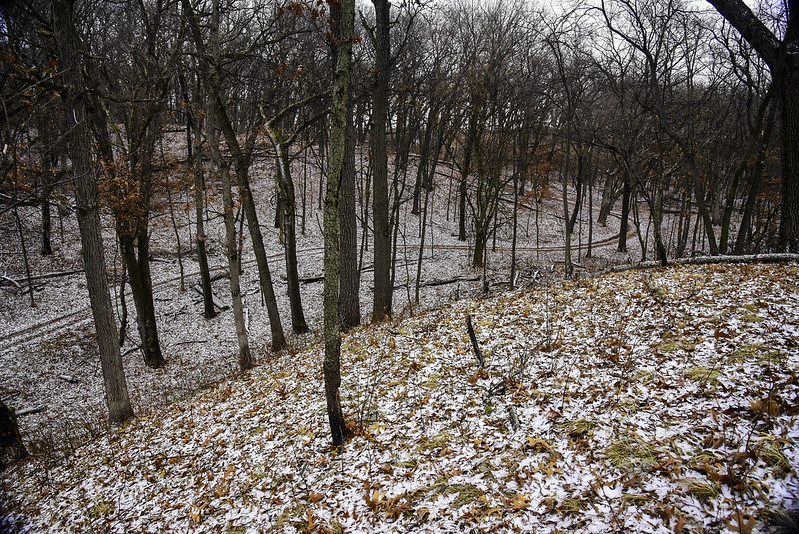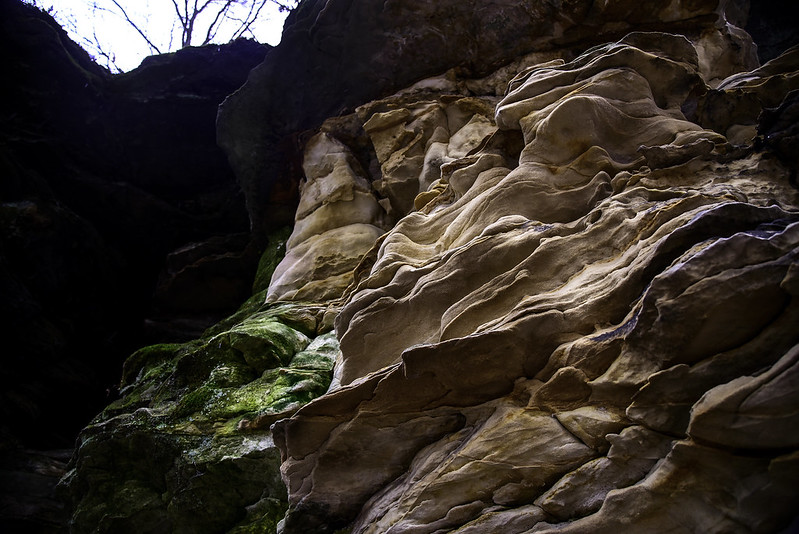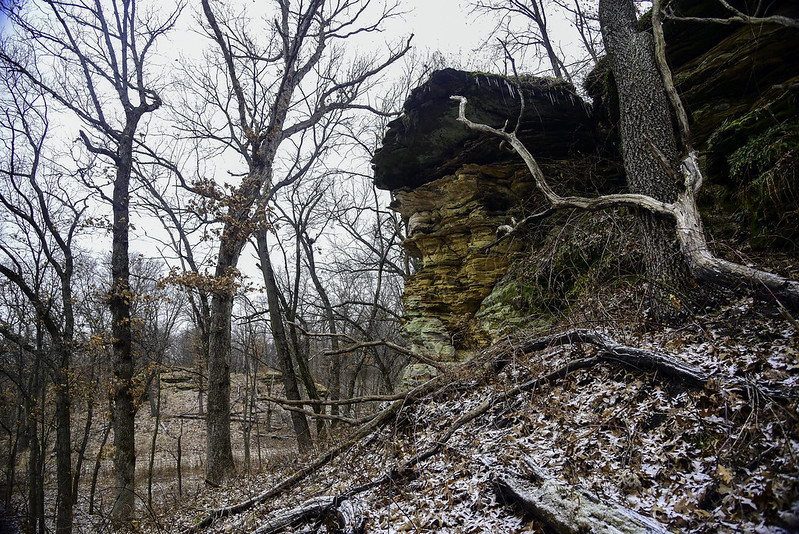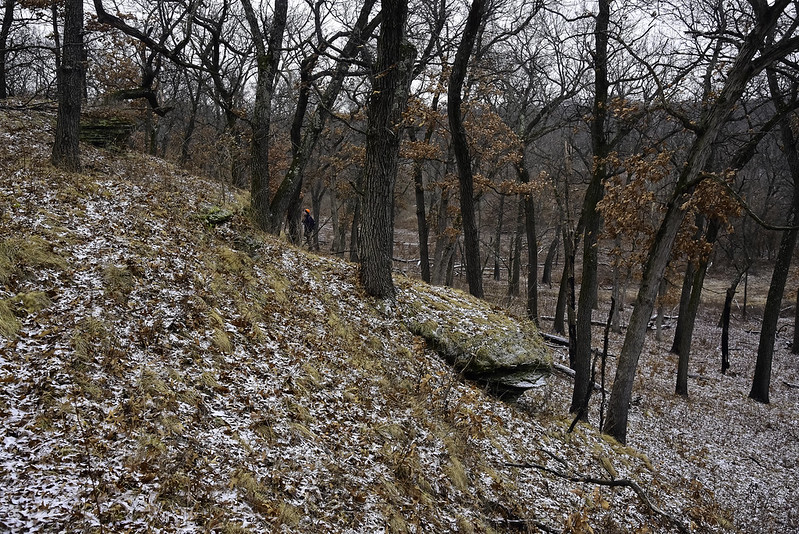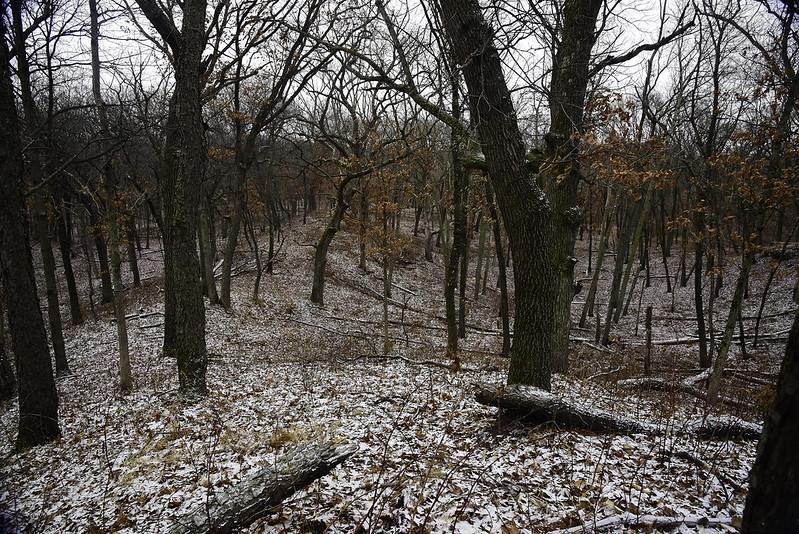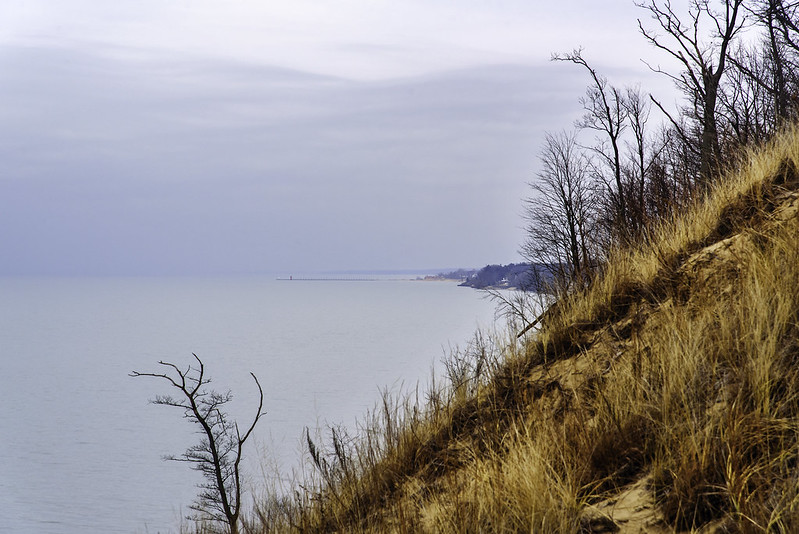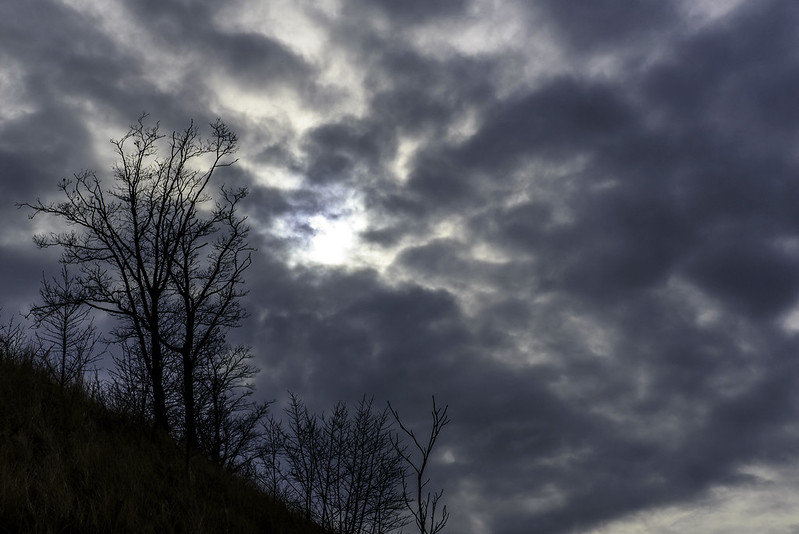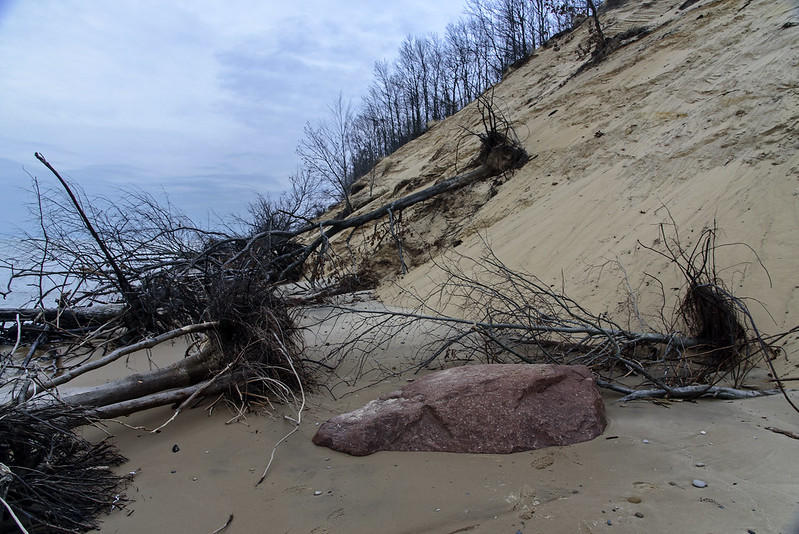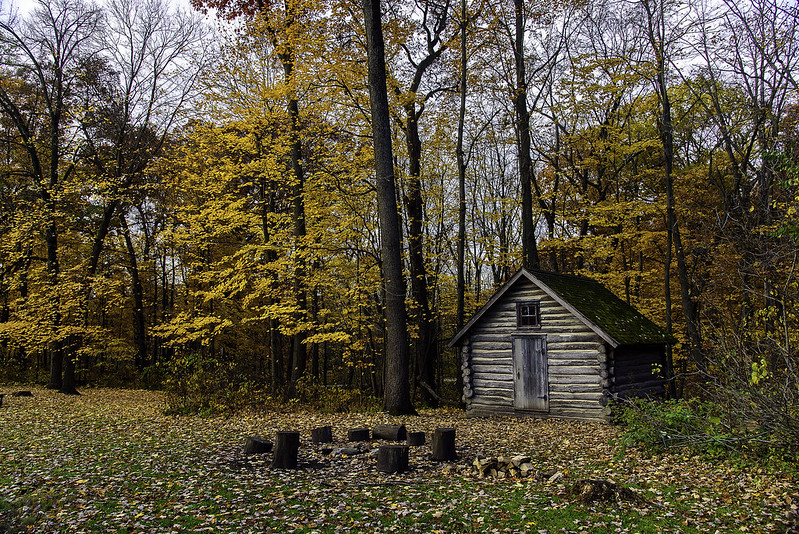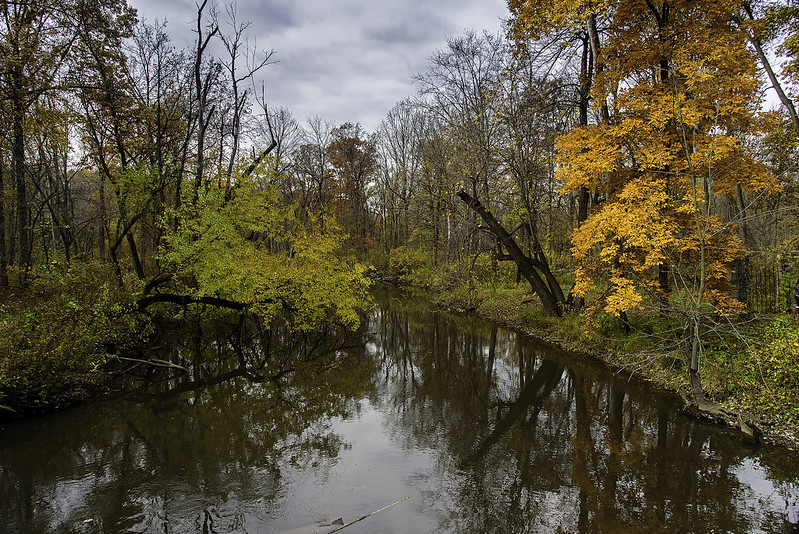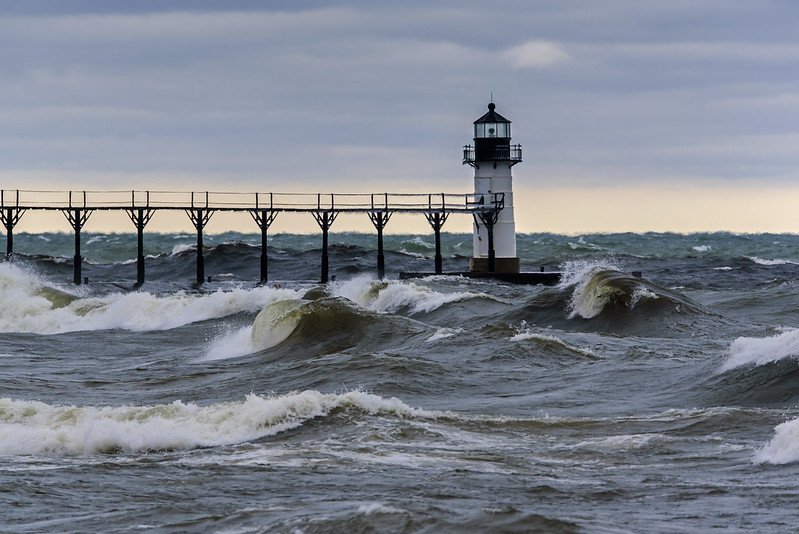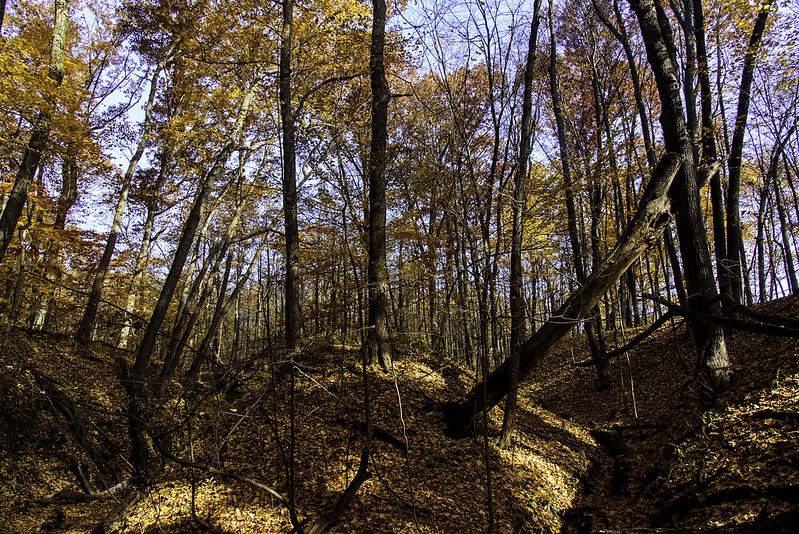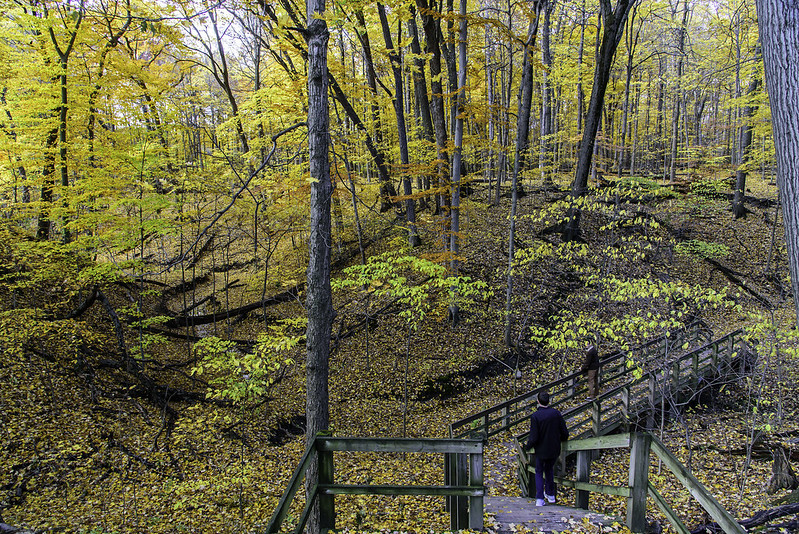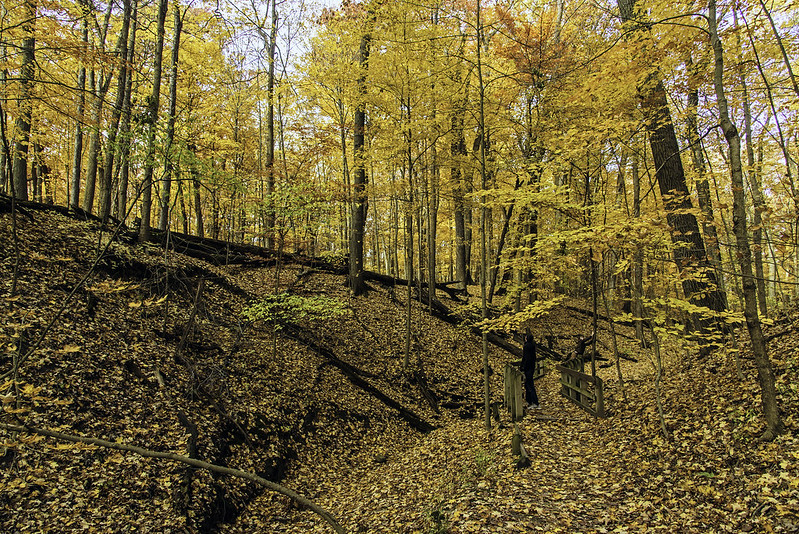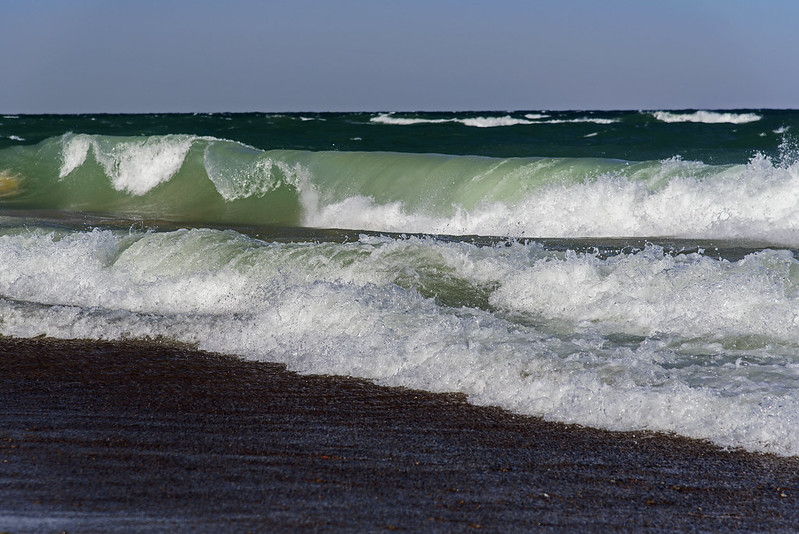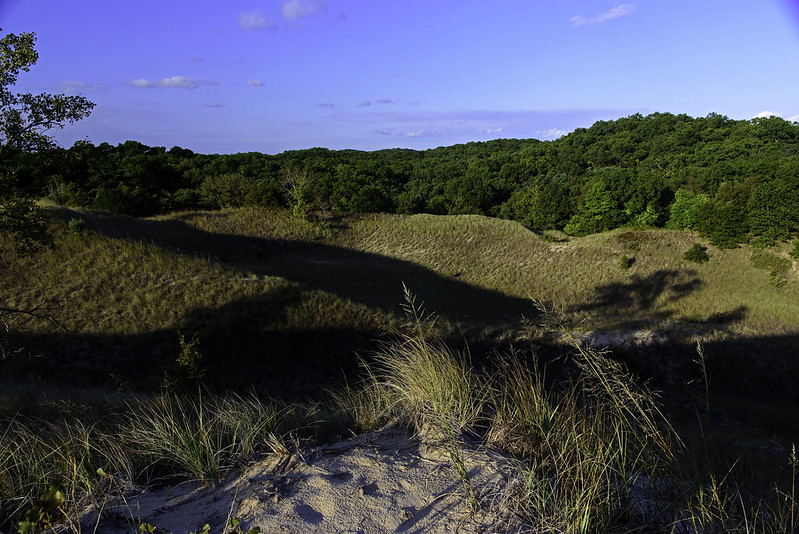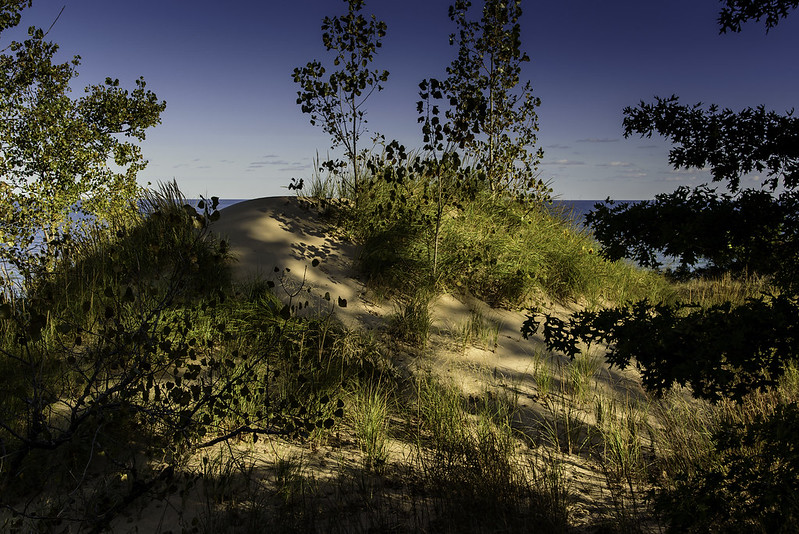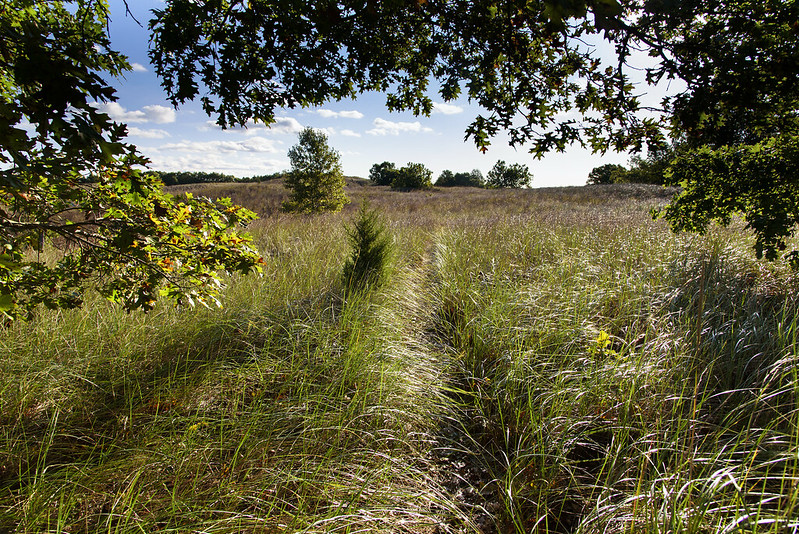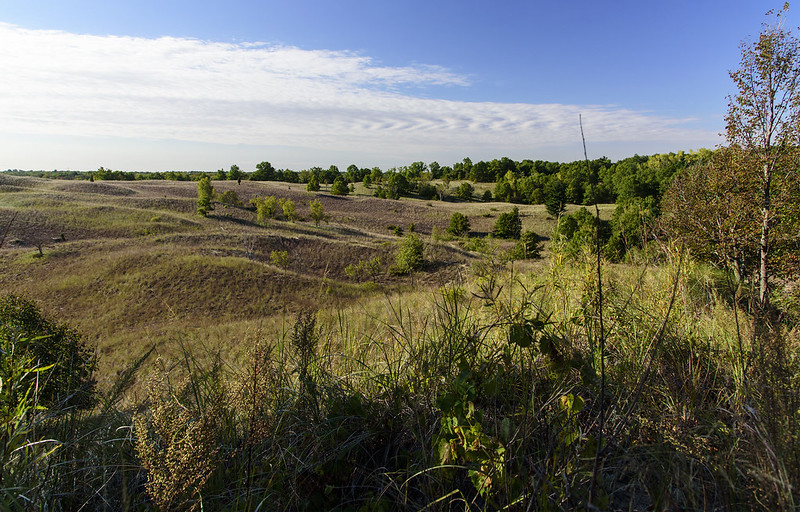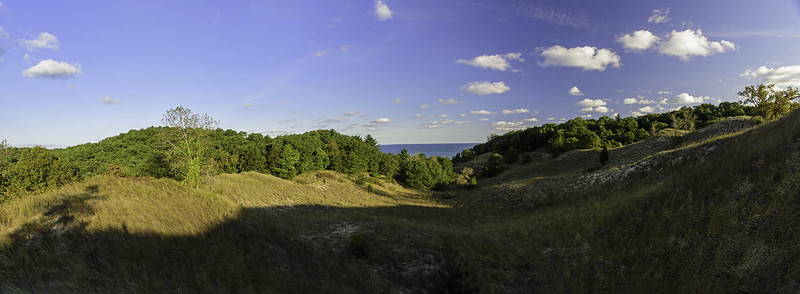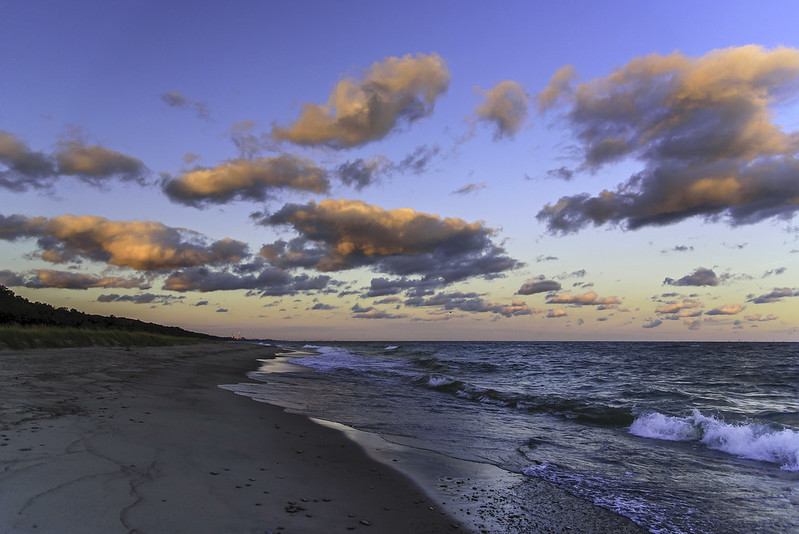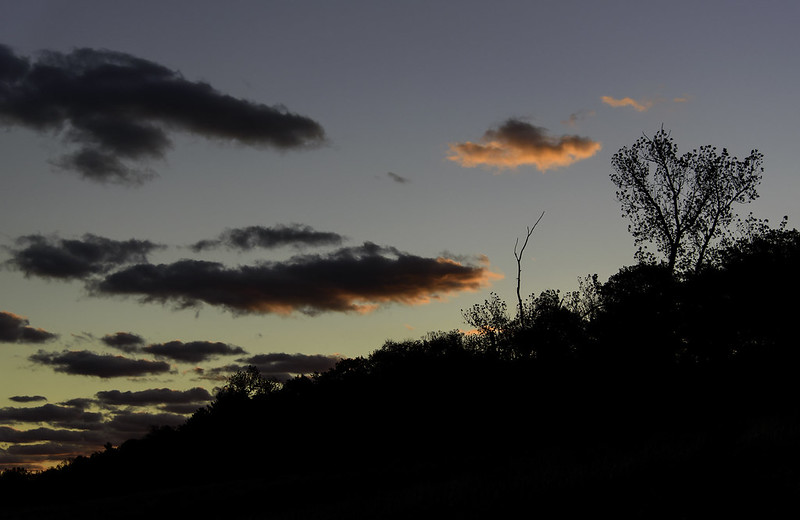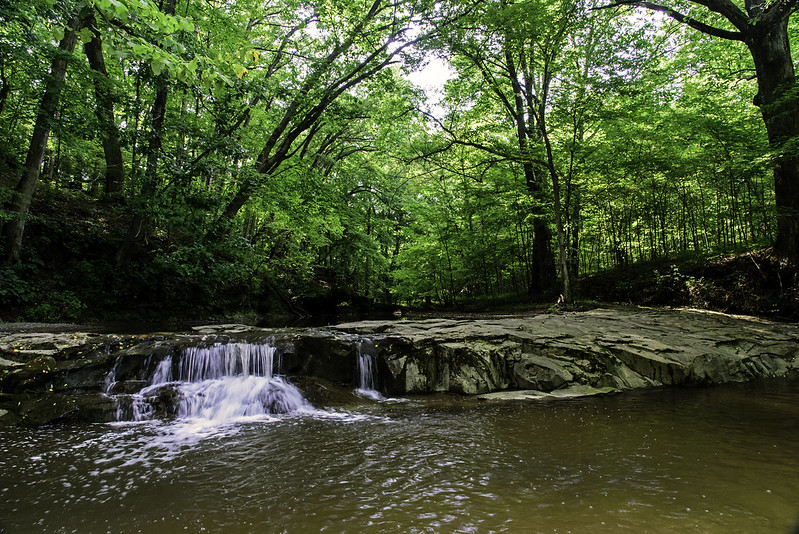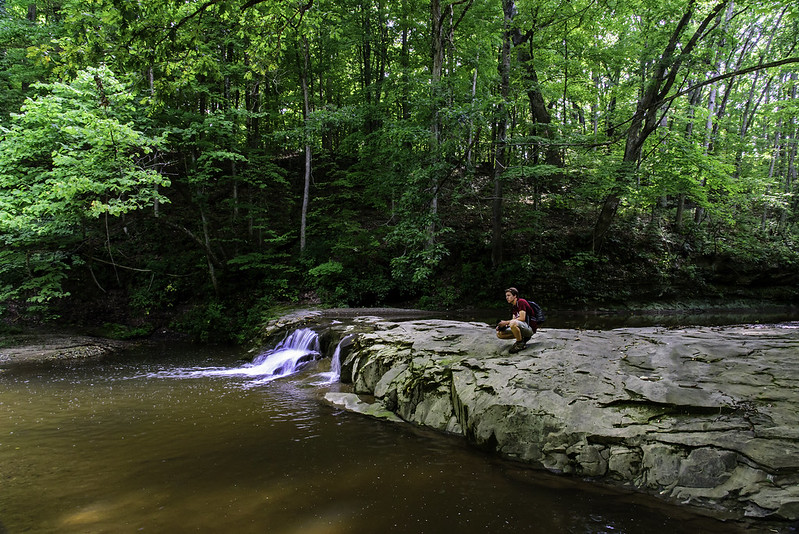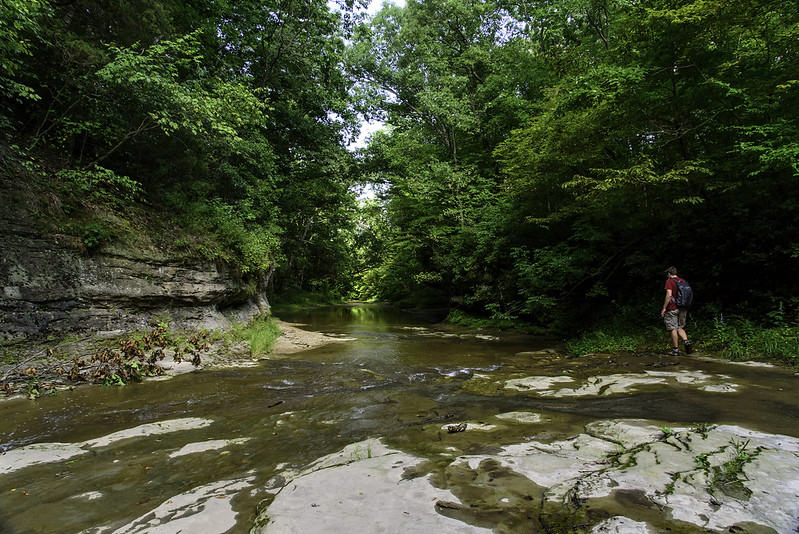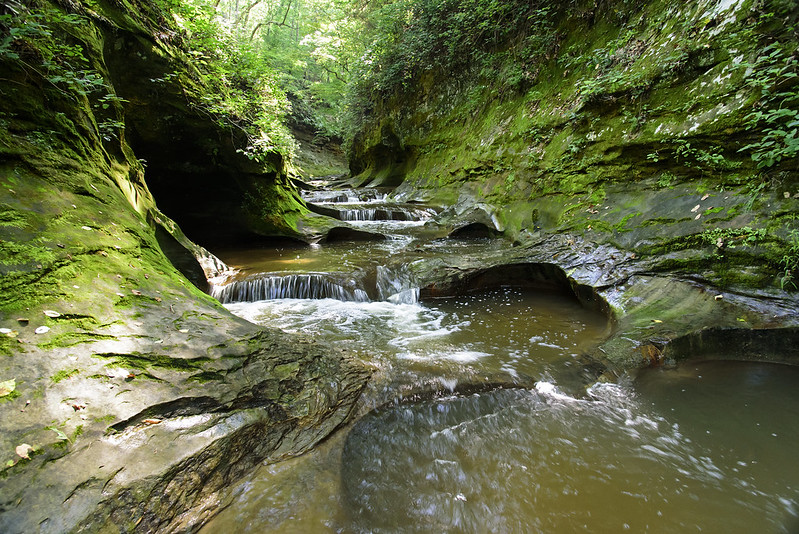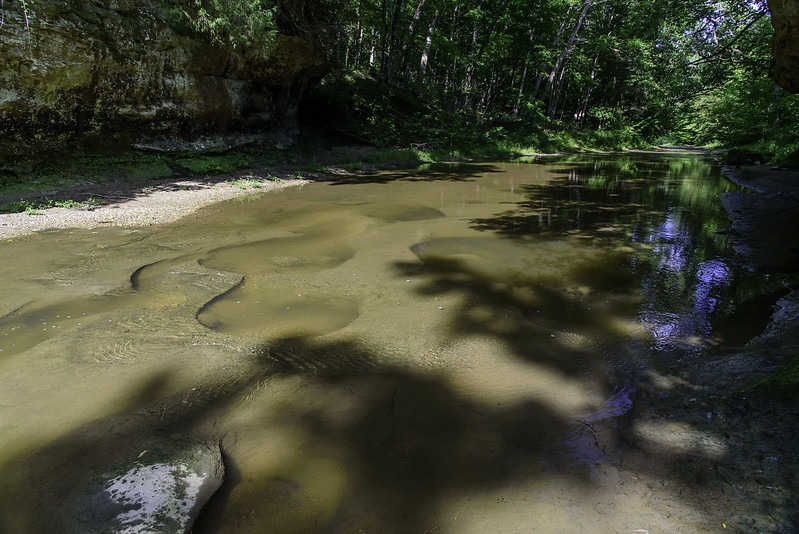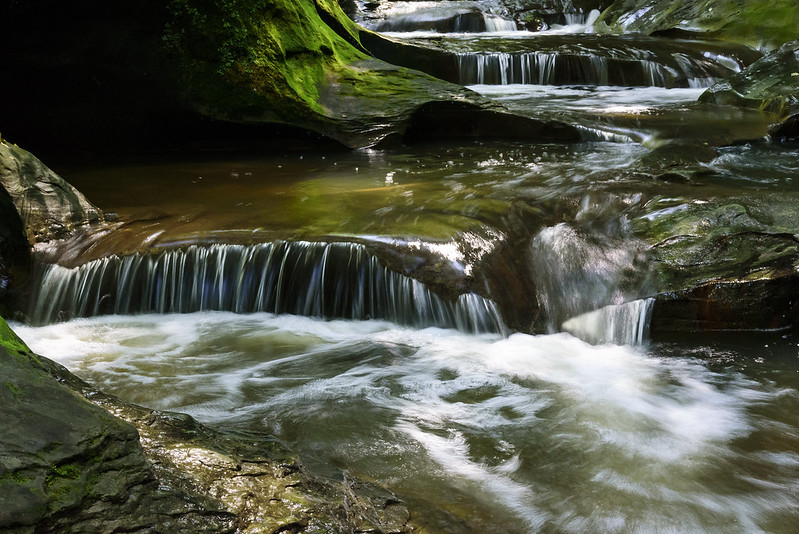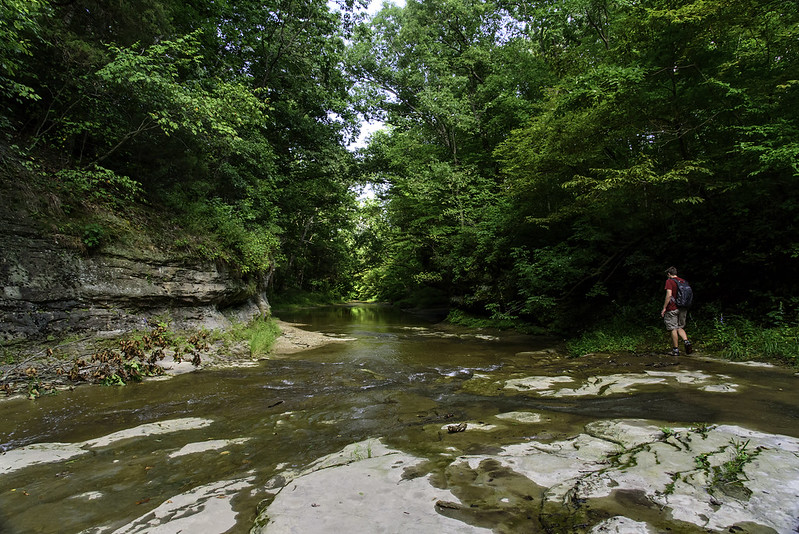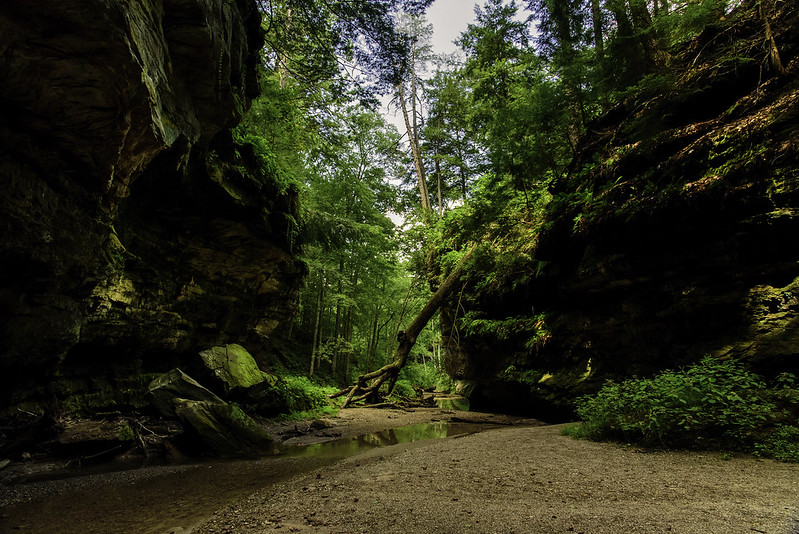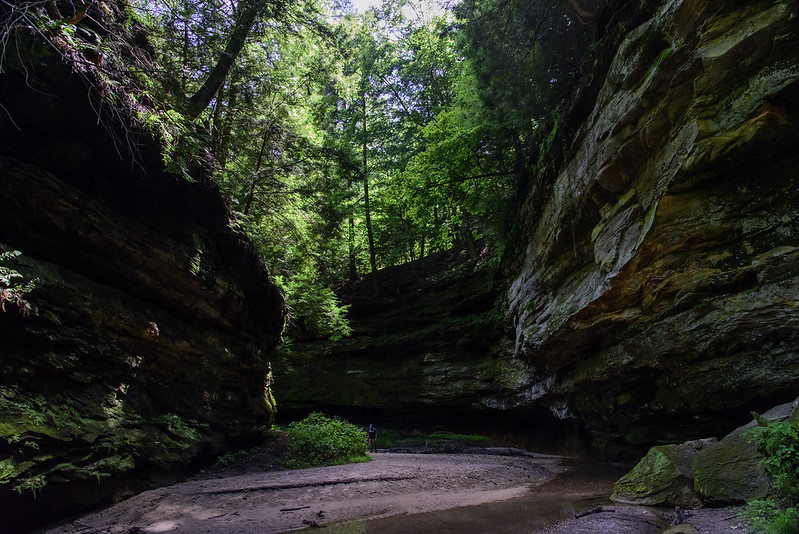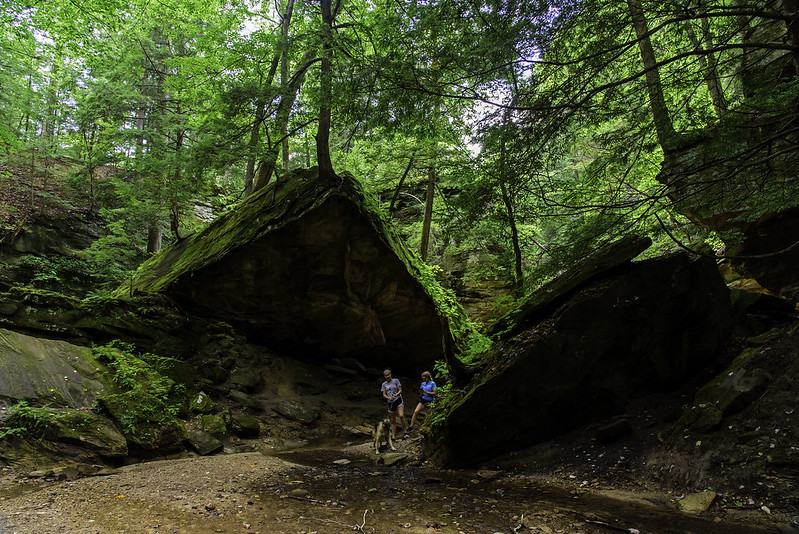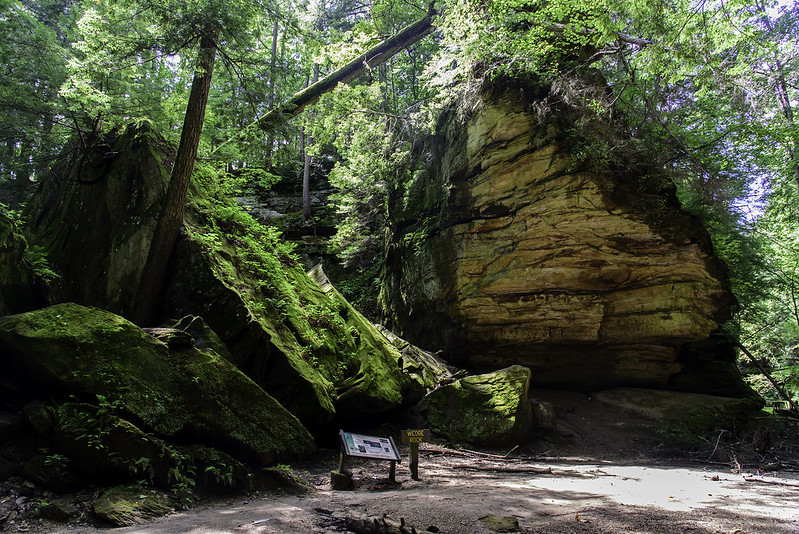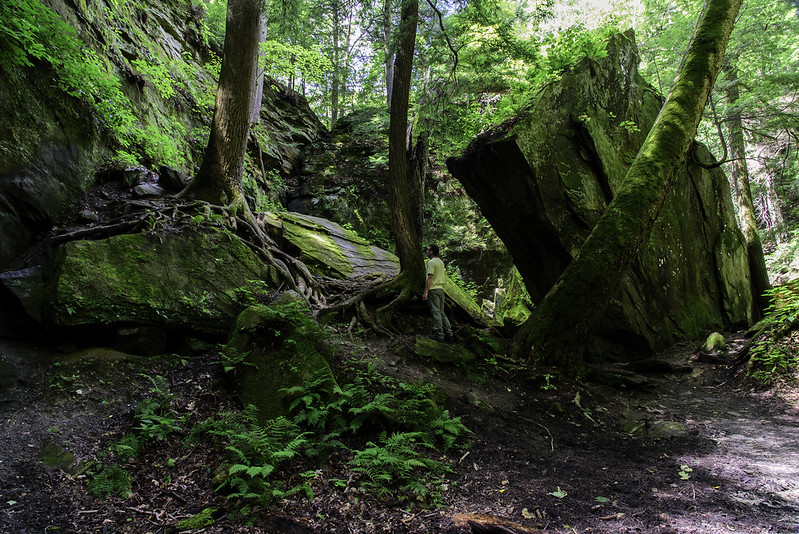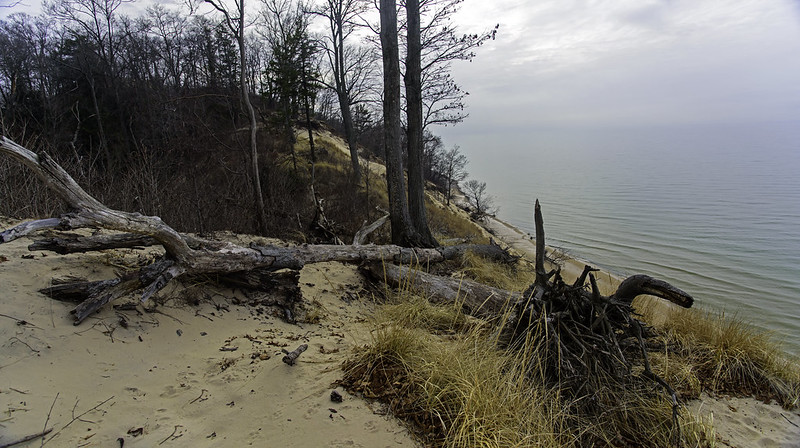
While hiking the rugged dune ridges parallel to Lake Michigan, the horizon seemed to disappear, was lost in the overcast sky. At times, it completely disappeared, which make our hike a surreal experience - imagine hiking along a wooded ridge with a vast open area next to you with no bottom and no top - that's how it appeared at times.
The winter season makes it easier to see distant objects and formations while atop the dune ridge; the lack of leaves makes this possible. We looked back at the trail winding from dune to dune and the woods and blowouts in the distance, and noticed a pair of A10 Warthogs flying just above the beach. They flew north then about 30 minutes later, we saw them again. This time, we were at the top of a blowout, an open area on the dune. We waived and were surprised the pilot of the second craft tipped his wing toward us as an acknowledgment. Too bad I didn't have my telephoto lens on my camera body, I could have had a few photos of the crew.



